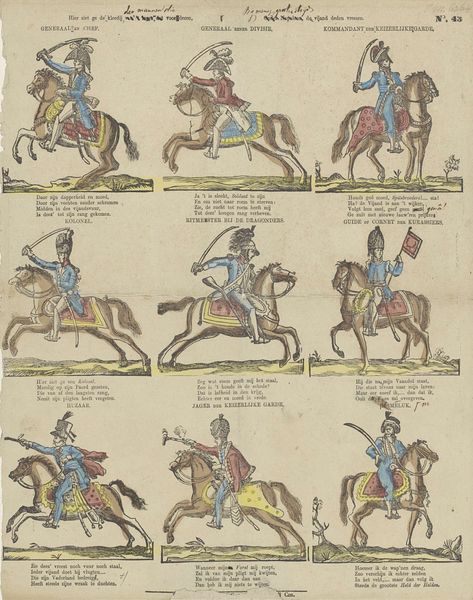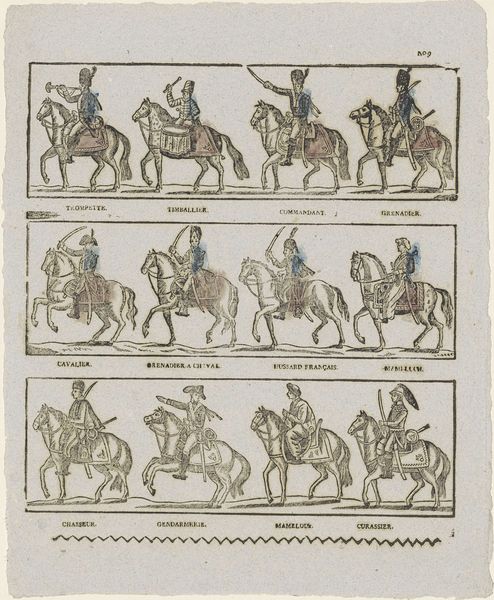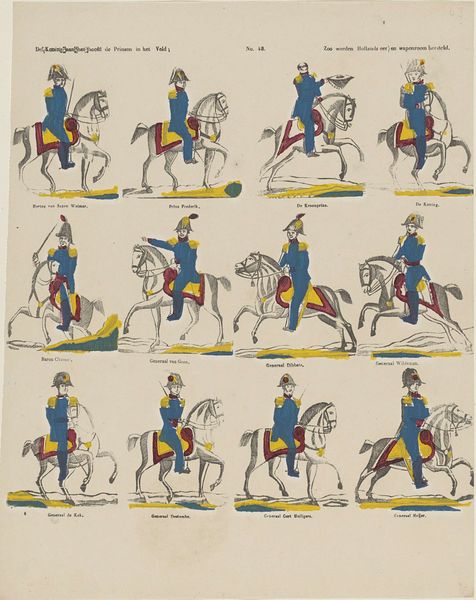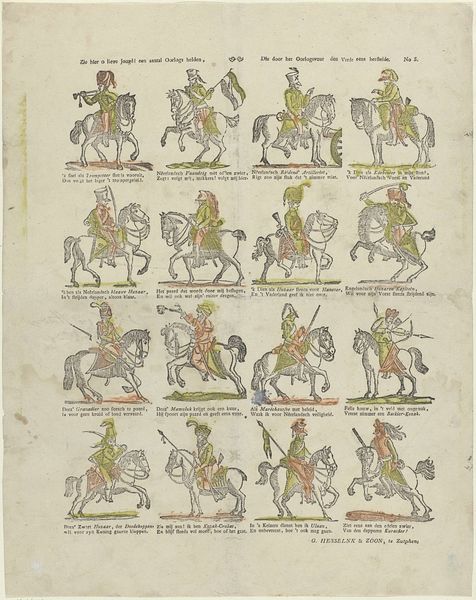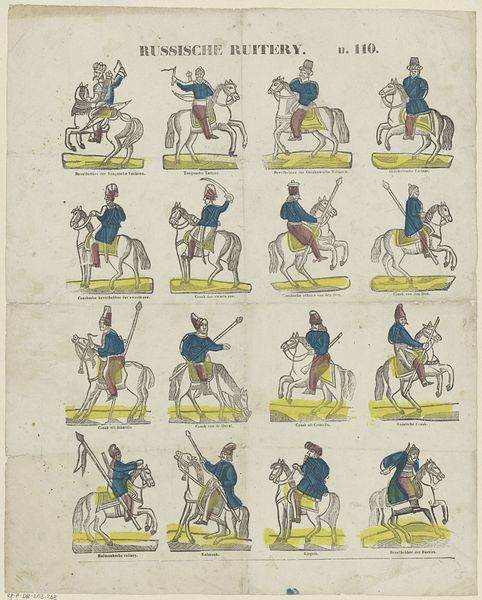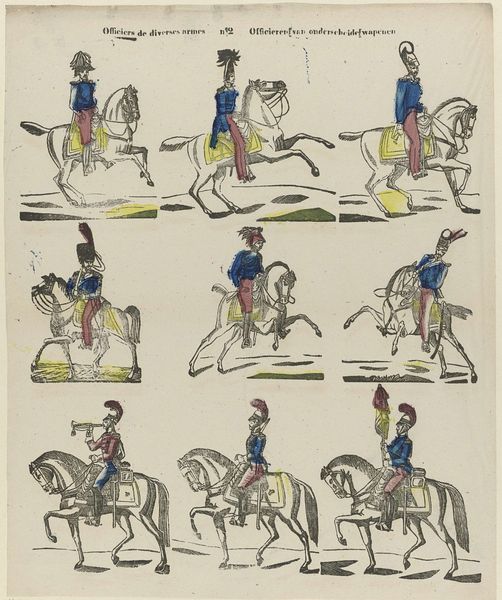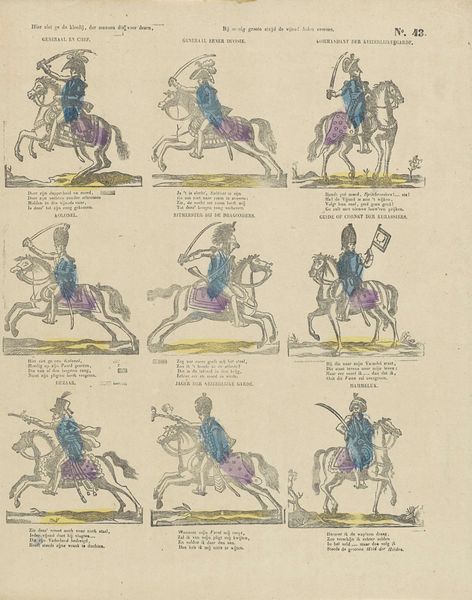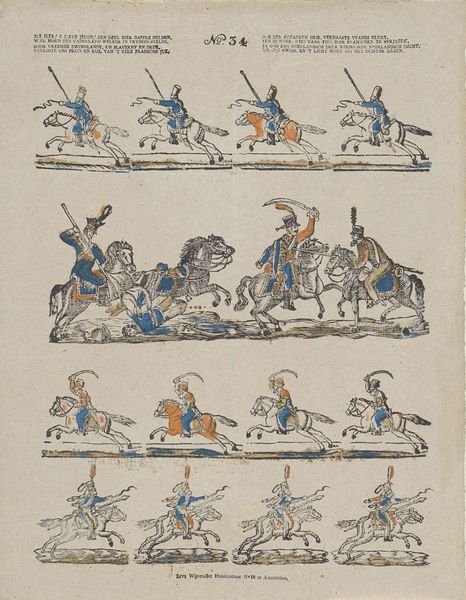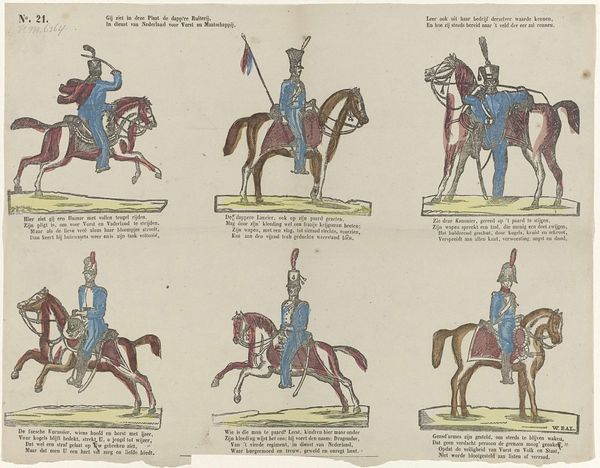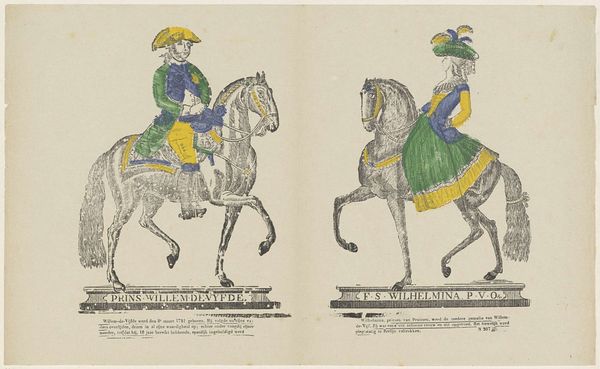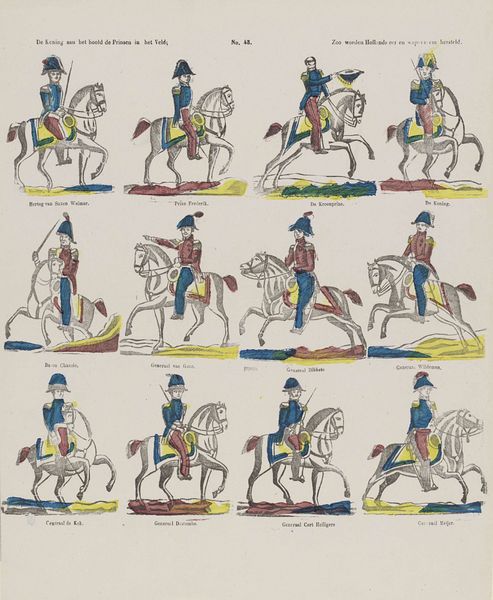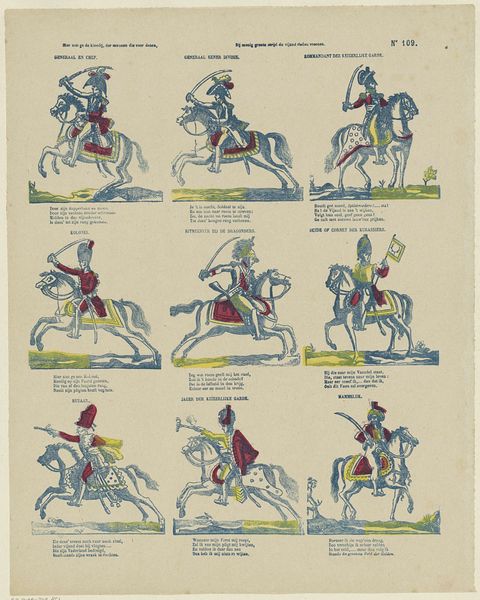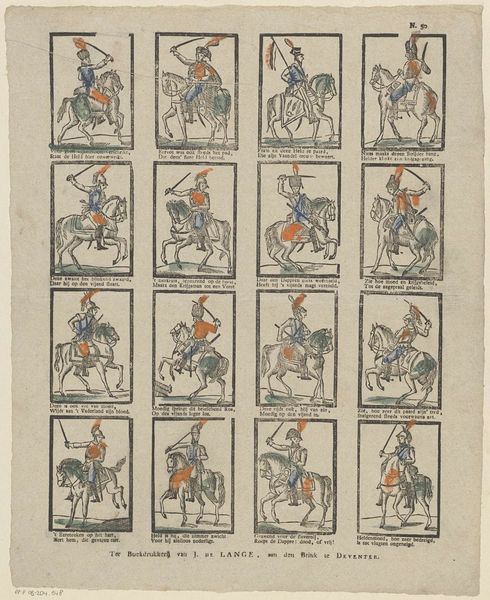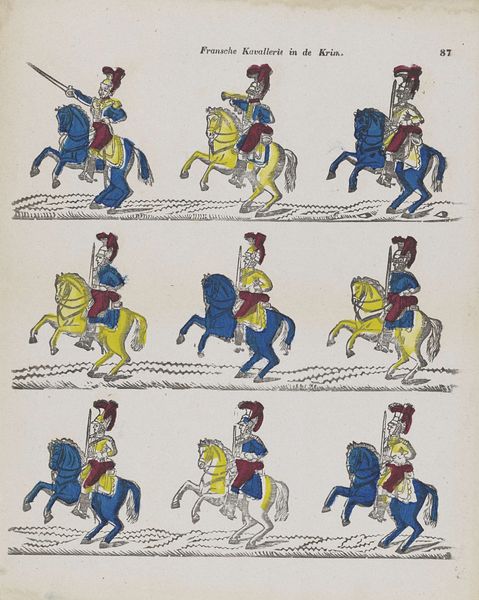
Hier ziet ge de kleedij, der mannen die voor dezen, / Bij menig groote strijd de vijand deden vreezen 1850 - 1870
0:00
0:00
pclvanstadenco
Rijksmuseum
graphic-art, print, engraving
#
portrait
#
graphic-art
#
narrative-art
# print
#
history-painting
#
engraving
Dimensions: height 370 mm, width 291 mm
Copyright: Rijks Museum: Open Domain
Curator: Well, this piece immediately gives me a feeling of quaint historical charm, like a forgotten children's book illustration. What's your take? Editor: A regiment frozen in time, each rider like a caricature. What’s the story here? Curator: We are looking at "Hier ziet ge de kleedij, der mannen die voor dezen, / Bij menig groote strijd de vijand deden vreezen"—roughly translated, “Here you see the clothes of the men who for this/In many great battles made the enemy fear"—an engraving dating from somewhere between 1850 and 1870, now residing in the Rijksmuseum. The artist is P.C.L. van Staden & Co. Editor: Fascinating. It's like a Napoleonic fashion parade, yet with the gravity of soldiers. I note the repeating motif of men on horseback, their swords raised. The raised sword itself signifies readiness for battle. Does it romanticize military glory, do you think? Curator: It does have that slight air of… embellishment, certainly. However, it’s important to understand the print served to inform people about military uniforms and history, but was most likely created to serve as entertainment for children. Remember this was created at a time before readily-available photography, where getting accurate details on uniforms was a task on its own. These bold costumes are more show than function—meant to strike terror through impressive display. Editor: Absolutely, this speaks to the enduring power of symbolism within visual culture. The uniforms broadcast specific information, acting like emblems. Every element communicates power, allegiance, and collective identity. The bright splashes of hand-added colors would certainly make them more palatable for the eyes of a child. Curator: There’s something innocent about the naivete of the artistry. It’s like historical documentation seen through rose-tinted glasses. Editor: Yes, a cultural artifact indeed. It blends history with storytelling, inviting us to reflect on collective memories and visual codes passed down. The artist is both an interpreter and a constructor of collective memory, imprinting his own commentary. Curator: That’s a rather perfect summing up! The act of engraving itself – scratching an image onto a surface - now acts as a powerful artifact with time turned it into a delicate form, that needs care. Editor: And this in turn provides the key insight to these artworks, a window to different approaches in human representation.
Comments
No comments
Be the first to comment and join the conversation on the ultimate creative platform.
